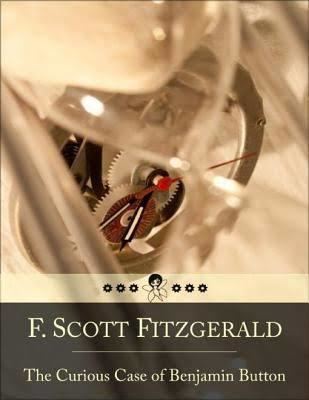7 /10 1 Votes7
Originally published 27 May 1922 | 3.5/5 Goodreads | |||||||||||||||||||||||||||||||||
 | ||||||||||||||||||||||||||||||||||
Adaptations The Curious Case of Benjamin Button (2008) Similar F Scott Fitzgerald books, Fiction books, Classical Studies books | ||||||||||||||||||||||||||||||||||
"The Curious Case of Benjamin Button" is a short story written by F. Scott Fitzgerald and first published in Colliers Magazine on May 27, 1922. It was subsequently anthologized in his book Tales of the Jazz Age, which is occasionally published as The Curious Case of Benjamin Button and Other Jazz Age Stories.
Contents
Plot
In 1860 Baltimore, Benjamin is born with the physical appearance of a 70-year-old man, already capable of speech. His father Roger invites neighborhood boys to play with him and orders him to play with children's toys, but Benjamin obeys only to please his father. At five, Benjamin is sent to kindergarten but is quickly withdrawn after he repeatedly falls asleep during child activities.
When Benjamin turns 20, the Button family realizes that he is aging backwards. At the age of 18, Benjamin enrolls in Amsterdam University, but is sent home by officials, who think he is a 50-year-old lunatic.
In 1880, when Benjamin is 20, his father gives him a control of Roger Button & Co. Wholesale Hardware. He meets the young Hildegarde monchrief, a daughter of General Moncrief, and falls in love with her. Hildegarde mistakes Benjamin for a 50-year-old brother of Roger Button; she prefers older men and marries him six months later, but remains ignorant of his condition. Years later, Benjamin's business has been successful, but he is tired of Hildegarde because her beauty has faded and she nags him. Bored at home, he enlists in the Spanish–American War in 1898 and achieves great triumph in the military, rising to the rank of lieutenant colonel. He retires from the army to focus on his company, and receives a medal.
In 1910, Benjamin, now looking like a 20-year-old, turns over control of his company to his son, Roscoe, and enrolls at Harvard University. His first year there is a great success: he dominates in football and takes revenge against Yale for rejecting him years before. However, during his junior and senior years he is only 16 years old, too weak to play football and barely able to cope with the academic work.
After graduation, Benjamin returns home, only to learn that his wife has moved to Italy. He lives with Roscoe, who treats him sternly, and forces Benjamin to call him "uncle." As the years progress, Benjamin grows from a moody teenager into a child. Eventually, Roscoe has a child of his own who later attends kindergarten with Benjamin. After kindergarten, Benjamin slowly begins to lose memory of his earlier life. His memory fades away to the point where he cannot remember anything except his nurse. Everything fades to darkness shortly after.
Similar stories
Fitzgerald, in his introduction to the story, remarks that he came across a similar plot in Samuel Butler's Note-Books several weeks after publishing Benjamin Button.
A story with a similar plot was published in 1921 by the Austrian author Roda Roda in Die sieben Leidenschafte (The seven tempers; Rikola Verlag, Vienna 1922) under the title "Antonius de Padua Findling".
J. G. Ballard's 1961 story "Mr F. is Mr F." features a man who regresses from adulthood to infancy when his wife becomes pregnant.
Manuel de Pedrolo's 1975 ca: Trajecte final ("Final journey") collection of short stories contains a story ("El regressiu" - "The regressive") set in a dystopian future with strict birth control in which a man starts regressing in age when he hits 78 and dies as an infant.
In W. P. Kinsella's 1986 novel The Iowa Baseball Confederacy, the character Marylyle Baron tells a tale about "strange happenings" in Johnson County Iowa: "The Backwards Plague" struck in the early 1900s. Young men and women in their late teens to early twenties suddenly started losing body mass. Eventually, they regressed to their birth weight, looking like new born babies. At that point the plague stopped, and its victims began to grow again.
In T. H. White's The Once and Future King, an Arthurian fantasy novel published in 1958, Merlyn the magician is depicted as living backwards through time.
In the comic 2000AD, issue 308, 19 March 1983, there is a story called "The Reversible Man" which starts with the man lying on the ground having died and he travels backwards through his life getting younger. He sees his children get "unborn" and he "unmeets" his wife and he regresses to babyhood and is eventually unborn himself.
Another story based on a similar plot is The Confessions of Max Tivoli, a novel by Andrew Sean Greer.
The 2008 film The Curious Case of Benjamin Button was an adaptation.
